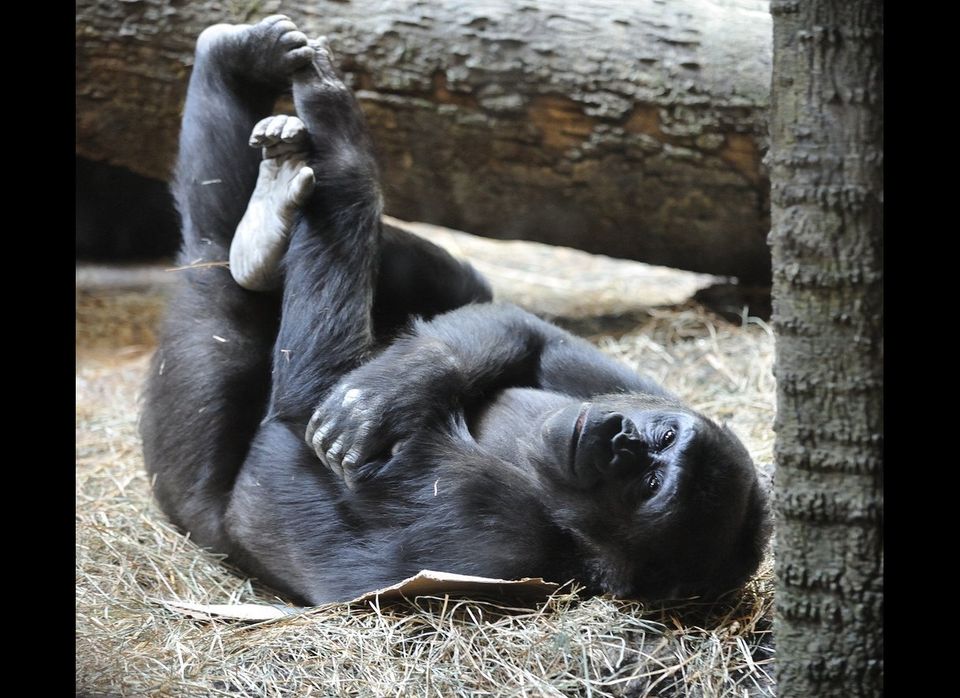When it comes to keeping pets, I'm pretty much a failure. When I was young, we got a chocolate lab puppy. We just had time to give him his name -- Lucky, ironically -- before his luck ran out. A school bus ran him over, the same day that we brought him home. Later on I got a goldfish, but he was eaten by my cat Hugo -- who himself was attacked by a neighborhood dog while I was standing up at my best friend's wedding. My neighbors made the decision to put him down while I was literally walking down the aisle. I do love animals, however, and I have learned a lot about animal welfare from curators, veterinarians and animal keepers.
Though usually unintentionally, humans pose the number one threat to animals through habitat destruction. The purpose of zoos is to educate, conserve and "showcase" some of the amazing creatures that share our planet with us. The American Zoo and Aquarium Association has extensive criteria that must be met before it grants a zoo or an aquarium an accreditation of good standing. Most circuses and roadside attractions, in contrast, use animals strictly to make a profit. They are not subject to the high standards that zoos are, and it shows in the appearance and behavior of their animals. Since I have worked for both a zoo and a circus, I have seen the disparity firsthand.
My former colleague, and one of the world's leading experts on animal welfare, created an international news firestorm when he voluntarily decided to relocate the Detroit Zoo's elephants to a better home, a sanctuary in California. Ron L. Kagan, director of the Detroit Zoological Society, said, "We are obligated to give animals an environment that meets their natural physical, social, behavioral and emotional needs. An enriched and vibrant setting, one that mimics their surroundings in the wild will help ensure animals thrive."
How exotic animals experience life in captivity is determined by the home that zoos give them. Some of the things that make for a great animal enclosure include the following:
1. Lots of trees and plants for most species. While some visitors might not like having to look so hard to spot the monkey or tiger, trees and plants are not only important for shade and privacy, but are also great places for animals to explore, and for keepers to hide food, so animals can stay active longer. Though it's not possible to do so in all climates, offering vegetation that's similar to what's found in the native region of the species is important.
2. Water. Just as humans need water to survive, so do animals -- and not just to drink. Whether it is a hot tub for snow monkeys to dip into on a cold winter day, as they would in hot springs in their natural habitat in Japan, or thousands of gallons of salt water for polar bears to dive into and swim as they would in the Arctic, water is a critical feature for many habitats.
3. Tools and toys. Apes are not the only species to use tools in the wild to forage for food and make things, but they do seem to be the best at it (and at making the tools too). Having objects like sticks in an enclosure can help keep animals active and engaged.
4. Enrichment. Whether it is a watermelon that elephants can toss about with their trunks, an ice block with a fish frozen in it for polar bears, or honey at the bottom of a termite mound for chimps to dig to, enrichment is a way to keep animals challenged and stimulated. It is as critical to an animal's well-being as having the right food and medical care. 5. Numbers -- solitary or packs. Animals should be neither lonely, nor overcrowded. Whether it is a male tiger who is solitary in the wild, or gazelles and zebras that travel in herds together in the African plains, the animals' natural social environment should be mimicked as accurately as possible.
6. Space. Animals need the right substrate and enough room to run, frolic, dig, leap or gallop. Generally open range enclosures are not only much better for the animals but have a profound impact on visitors. No one feels good seeing a majestic exotic animal confined behind bars or in a small cage.
7. Heat and Light. Nocturnal creatures need dark while some reptiles and amphibians need hot lighting. Getting temperature and lighting right are key to an animal's physical and emotional well-being, reproduction and survival.
From desert plains to the wild jungle, we scoured the US in search of some of the best AZA accredited animal enclosures. This slide show will show you some stars.
